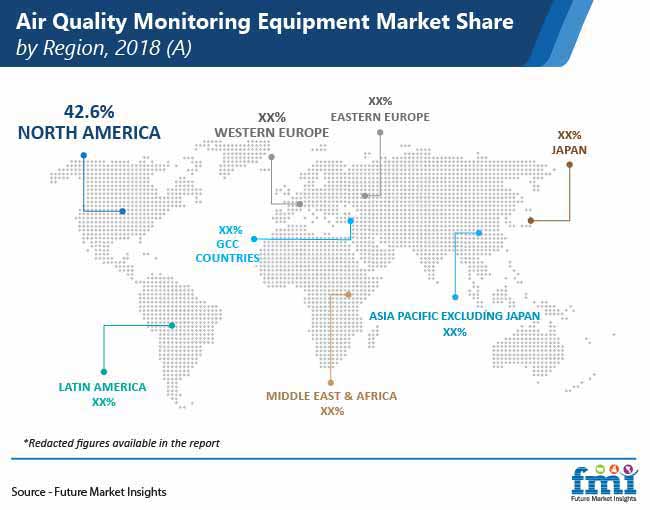Air Quality Monitoring Equipment Market Current and Future Demand, Analysis, Growth and Forecast By 2029
The worldwide sales of air quality monitoring equipment reached US$ 4.7 Bn in 2018, and this is anticipated to exhibit a CAGR of 7% during the forecast period of 2019 to 2029. The emergence of smart air quality meters and growing partnerships between private-public institutions for air pollution monitoring are factors creating potential growth opportunities for the air quality monitoring equipment market. According to FMI’s report, factors such as rising air pollution, increasing government initiatives on reducing air pollution, and rapid industrialization in developing economies across the globe are projected to drive the growth of the air quality monitoring equipment market.
Key Takeaways of Air Quality Monitoring Equipment Market Study
- Continuous rise in air pollution levels in urban areas and stringent government regulations and laws towards environmental protection are expected to boost the air quality monitoring equipment market growth.
- North America dominated the air quality monitoring equipment market in 2018 in terms of revenue, owing to the presence of early technology adopters in developed countries such as the U.S. and Canada.
- The adoption of indoor air quality monitors is expected to gain significant traction during the forecast period, owing to the increasing demand for smart air quality monitors in smart cities across the globe.
- Demand for air quality monitoring equipment solutions in the residential sector is expected to increase at a striking CAGR during the forecast period, owing to increasing demand for IoT-based indoor air quality monitors in pharmaceutical and petrochemical industries.
- Lack of awareness about indoor air pollution and dearth of strict regulations for air quality monitoring in various countries are some of the factors hindering the growth of the air quality monitoring equipment market.
Request a report sample to gain comprehensive market insights @ https://www.futuremarketinsights.com/reports/sample/rep-gb-11083
“Increasing harmful emissions such as carbon monoxide, nitrogen dioxide, and particulate matter (PM10 & PM25) from the industrial and manufacturing sectors, and stringent government regulations and laws to control and monitor air pollution levels will increase the demand for air quality monitoring systems in the coming years.”

Increasing Focus of Key Players on Product Innovation
Companies in the air quality monitoring equipment market are investing more towards advanced technologies like IoT and Machine Learning (ML) to develop advanced air quality monitoring equipment to minimize indoor and outdoor air pollution. Leading players are adopting business expansion, acquisition, and collaboration strategies in a bid to capture a significant share of the global market.
- For instance, in July 2019, SKC Ltd acquired Colormetric Laboratories, Inc. (CLI) to add CLI products, longstanding sampling solutions that help maintain the health and safety of workers. The company looks forward to continuing to provide the same great CLI products with excellent customer and technical support.
Contact Sales for Further Assistance in Purchasing this [email protected] https://www.futuremarketinsights.com/checkout/11083
Some of the key players in the air quality monitoring equipment market are SKC Ltd, TSI Incorporated, Aeroqual Limited, Thermo Fisher Scientific, Testo, Honeywell, PCE Instruments, Opsis AB, Ecotech, ENVEA group, Vaisala, LumaSense Technologies, and Oizom Instruments.
More Valuable Insights on Air Quality Monitoring Equipment Market
Future Market Insights puts forward an unbiased analysis of the global air quality monitoring equipment market, providing historical data of 2014-2018 and forecast statistics for 2019-2029. To understand the opportunities in the air quality monitoring equipment market, the market has been segmented on the basis of component, equipment type, and end user, across seven major regions.
